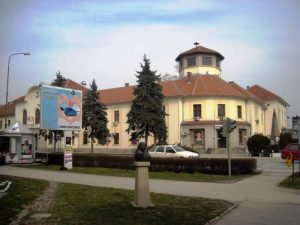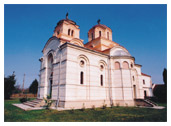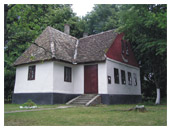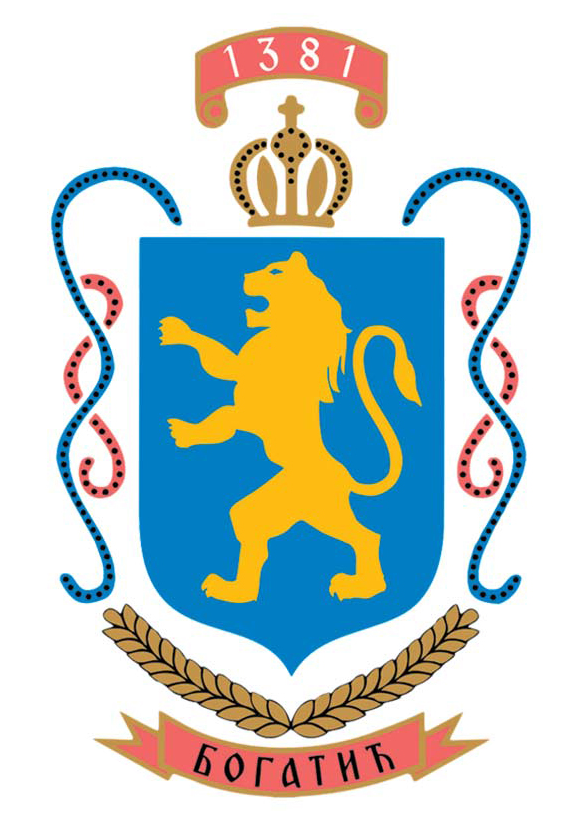Heritage
 The old church in Bogatić was first described in detail by Joakim Vujić in 1826: “In this village there is a large new church made of wood.” The founder of this church is His Royal Highness Mr. Miloš, with his brother Mr. Ephraim. At this place there was a small church, which the Turks burned down after the fall of the Serbian leader G. Petrović and destroyed until it was founded. The temple of the church is Thomas Sunday, the eighth day after Pascha.” In the middle of the 19th century, a large, one-nave church with a chancel, choir and bell tower was built. When entering the church, there is a plaque on the wall from the outside on the right, saying that the church was built in 1854-1856. The following municipalities participated in the construction: Bogatićka, Dubljanska, Belotićka and Metkovićka. It is dedicated to the Holy Mother of God and is a true gem of our cultural past. Although the church was completed in 1856, several years passed until the church municipality decided to renovate the interior. On June 15, 1863, under the number 923, the Consistory of the Eparchy of Sabačka reported to the Ministry of Education and Church Affairs: “… that the municipality of Bogatića wants to raze its church, and to use its church capital, which has been kept for this purpose with the approval of the Ministry, and it was not handed over to the management of the funds, so, since that capital will not be sufficient for the intended purpose, the Consistory is asking for your intervention with the relevant ministry so that the missing change can be settled with taxes…
The old church in Bogatić was first described in detail by Joakim Vujić in 1826: “In this village there is a large new church made of wood.” The founder of this church is His Royal Highness Mr. Miloš, with his brother Mr. Ephraim. At this place there was a small church, which the Turks burned down after the fall of the Serbian leader G. Petrović and destroyed until it was founded. The temple of the church is Thomas Sunday, the eighth day after Pascha.” In the middle of the 19th century, a large, one-nave church with a chancel, choir and bell tower was built. When entering the church, there is a plaque on the wall from the outside on the right, saying that the church was built in 1854-1856. The following municipalities participated in the construction: Bogatićka, Dubljanska, Belotićka and Metkovićka. It is dedicated to the Holy Mother of God and is a true gem of our cultural past. Although the church was completed in 1856, several years passed until the church municipality decided to renovate the interior. On June 15, 1863, under the number 923, the Consistory of the Eparchy of Sabačka reported to the Ministry of Education and Church Affairs: “… that the municipality of Bogatića wants to raze its church, and to use its church capital, which has been kept for this purpose with the approval of the Ministry, and it was not handed over to the management of the funds, so, since that capital will not be sufficient for the intended purpose, the Consistory is asking for your intervention with the relevant ministry so that the missing change can be settled with taxes…
 The building was built as a typical building for the needs of the county administration in the Kingdom of Yugoslavia. A similar building was built in parallel in Zaječar. Its construction began in 1929. years. During the visit of King Alexander the First Karađorđević to Bogatić, 3. June 1934 year, the building was built, but not completed. On that occasion, the king approved funds from the budget of the Kingdom of Yugoslavia, so it was completed the same year.
The building was built as a typical building for the needs of the county administration in the Kingdom of Yugoslavia. A similar building was built in parallel in Zaječar. Its construction began in 1929. years. During the visit of King Alexander the First Karađorđević to Bogatić, 3. June 1934 year, the building was built, but not completed. On that occasion, the king approved funds from the budget of the Kingdom of Yugoslavia, so it was completed the same year.
After the war, the building was the center of Sreza Mačvanski, and from 1955 until today it is the seat of the Municipality of Bogatić. The building is located on the corner of two streets, on the regulation lines. Facade panels, as well as roof planes, follow a very developed foundation. The central part of the building, placed at the corner of the streets, has a semicircular base and a circular fire dome at the top, which dominates. The facade panels are modestly decorated, except for some parts where decorative plastic inspired by the Hungarian Art Nouveau is applied.
 In Jurišić’s garden, in addition to the building of the old sculptor, there are also the central object of the house and a spacious economic building – the garden, which is connected to an open porch on one side.
In Jurišić’s garden, in addition to the building of the old sculptor, there are also the central object of the house and a spacious economic building – the garden, which is connected to an open porch on one side.
The old sculptured building is the most valuable building within the garden, which according to tradition is connected to Hajduk Stanko, a character from the famous novel by the writer Janko Veselinović, and is also a valuable monument of the folk architecture of this region from the second half of the 19th century. century.
 The memorial ossuary church was built in 1936. year, modeled on the monuments of the Moravian style group. It is made in the form of a developed triconchos with an eight-sided dome. There is a bell tower above the chancel, and in the crypt below it are the bones of soldiers who died in the First World War. The altar apse and choirs are pentagonal on the outside and semicircular on the inside. The richly decorated facades reflect the Serbian-Byzantine style of construction. Two horizontal cornices divide the facades into three parts. The portals are on the west side and on the choir stalls. In the lunette above the western portal is a niche with a painted image of the Ascension of Christ. The iconostasis partition decorated with woodcarving was installed during the construction of the temple. The icons were painted by Stevan Čalić.
The memorial ossuary church was built in 1936. year, modeled on the monuments of the Moravian style group. It is made in the form of a developed triconchos with an eight-sided dome. There is a bell tower above the chancel, and in the crypt below it are the bones of soldiers who died in the First World War. The altar apse and choirs are pentagonal on the outside and semicircular on the inside. The richly decorated facades reflect the Serbian-Byzantine style of construction. Two horizontal cornices divide the facades into three parts. The portals are on the west side and on the choir stalls. In the lunette above the western portal is a niche with a painted image of the Ascension of Christ. The iconostasis partition decorated with woodcarving was installed during the construction of the temple. The icons were painted by Stevan Čalić.
A complex of monuments dedicated to earlier wars, which consists of a pedestal on which are placed monuments to the participants of the wars from 1912-1918. and from 1941-1945. and the memorial bust of Duke Milić Drinčić are located southeast of the temple.
 Church dedicated to St. Peter and Paul was built in 1927. year, in the spirit of Moravian architecture. Its base is in the form of a triconchos with a semi-crown altar apse in the east and rectangular shallow conches on the side walls. An octagonal dome rises at the intersection of the longitudinal nave and the side aisles over the system of arches and pandatifs.
Church dedicated to St. Peter and Paul was built in 1927. year, in the spirit of Moravian architecture. Its base is in the form of a triconchos with a semi-crown altar apse in the east and rectangular shallow conches on the side walls. An octagonal dome rises at the intersection of the longitudinal nave and the side aisles over the system of arches and pandatifs.
The church is built of hard material, brick and stone, with plastered and whitewashed facades. The harmoniously designed building is decorated with a series of decorative elements made in the spirit of Moravian medieval architecture (stylized rosettes, cordon wreath, archivolts).
 On the area of the planned ethnic park, with an area of about 1.5 hectares, there is a typical Mačva homestead from the region 19. and the beginning 20th century. The yard consists of a central, spacious residential building and several auxiliary buildings (barn, garden shed, stable, wheelhouse, bread oven, porch for agricultural tools), located mostly around the perimeter of the yard.
On the area of the planned ethnic park, with an area of about 1.5 hectares, there is a typical Mačva homestead from the region 19. and the beginning 20th century. The yard consists of a central, spacious residential building and several auxiliary buildings (barn, garden shed, stable, wheelhouse, bread oven, porch for agricultural tools), located mostly around the perimeter of the yard.
A spacious yard with an old, branching linden tree and low, lush boxwoods gives the yard a special ambient value.
Sovljak is located on the road Bogatić – Crna Bara, five kilometers from the municipal center of Bogatić and the same distance from the river Drina. In the Ethno-park, a piece of old Mačva has been torn away from the past – an authentic courtyard with a garden, more than a hundred years old. The courtyard is dominated by a house, built in the second phase of construction in Mačva, of the “Osećan” type, typical for that time – with two entrances, i.e. entrance and exit and a sundial indicating the exact time. Next to the house is an old linden tree, whose trunk is 1.80 meters in diameter and which provides shade with a luxuriant canopy 30 meters in diameter…


